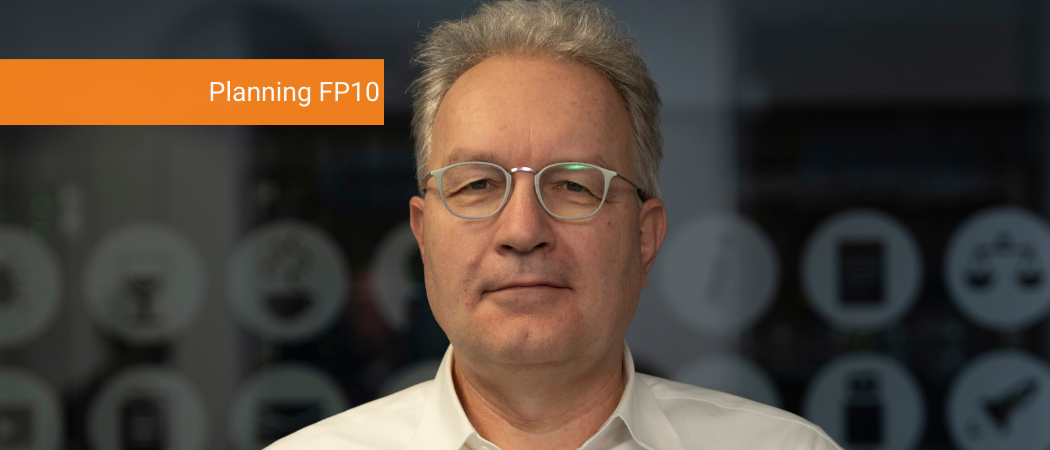The next research and innovation programme should be designed to dovetail into other EU funding streams, says Erik Huizer, chief executive of the pan-European research and education data network GÉANT

Erik Huizer, chief executive of GÉANT
One of the greatest shortcomings of EU framework research programmes is they are not usually designed with appropriate due care or consideration of the other funding mechanisms managed by the European Commission.
Let’s take for example the Digital Europe Programme (DEP) and the second iteration of the Connecting Europe Facility (CEF2). These two programmes make funding available for projects under policy objectives that are also covered by Horizon Europe.
The same applies to the European High Performance Computing Joint Undertaking (EuroHPC JU) and the European Quantum Communication Infrastructure Initiative (EuroQCI).
Then there are initiatives within Horizon Europe that give out funding for Common European Data Spaces, which are primarily funded from DEP.
Last but not least, the overarching policy ambition of delivering the digital and green transformation of the EU’s economy is being implemented through a plethora of funding programmes.
All these programmes have different funding rates, different indirect cost provisions and different eligibility requirements. As a result, this agglomeration of schemes presents a considerable bureaucratic burden for any organisation working on a specific project or in a particular field that wants to engage thematically and tap these different funding streams.
In view of this, FP10 needs to be carefully designed with reference to other new programmes, such as the future DEP2 and CEF3. Taking this comprehensive and cohesive approach, the aim should be to reduce the complexity of supporting a science or research related project via different programmes and to make the work of research- and e-infrastructures less bureaucratic.
There are also national contributions to certain programmes, which results in added complexity, notably when the money is coming from Cohesion Funding or the Recovery and Resilience Facility. Here, the financial engineering needed to match the aims of these two schemes is convoluted - to say the least.
The same problem is replicated in the research Missions – one of a handful of new policy initiatives in Horizon Europe – but which draw funding from many other sources. For example, projects contributing to the objectives of the mission to restore oceans and waters are getting money from 16 different EU funding programmes, from the Maritime, Fisheries and Aquaculture Fund (EMFAF), to the LIFE programme for climate action, and Erasmus+. This has only added to the confusion of ownership when more straightforward ambitions could have been realised.
All of this underlines the importance of single policy objectives being funded by single instruments, in order to reduce the ongoing fragmentation of the sources of funding for EU policies - which we have seen increasing in number across the European budget in the current and previous multiannual financial frameworks.
For organisations that do run cross-programme projects it would be very helpful if there was some harmonisation in criteria and reporting requirements between the various programmes.
Improve e-infrastructures for research
Under the current circumstances, matching programmes and policies is not always straightforward.
Looking at the future digital initiatives backed by the EU: the EuroHPC, the Digital twins and Destination Earth, the Common European Data Spaces, and the predicted boom of the Digital Single Market, the requirement for future data capacity and secure data connectivity is set to increase considerably.
How can an optimised FP10 best serve this development in the interest of European research, science and education?
Simplifying rules and ensuring sustainable funding for established e-infrastructures over a long period can cement Europe’s competitive edge in this area. Well-functioning public e-infrastructures complement private infrastructures to ensure that European research, science and innovation remains world-leading.
Directorate generals within the European Commission should realise that existing public digital service providers such as GÉANT are essential to enact developments in public policy. Therefore, e-infrastructures should be recognised and continue to be sustainably funded in FP10 to maximise the chances of reaching the programme’s vision and enabling the Digital Decade.
This should preferably be done in such a way that e-infrastructures for research remain flexible and fit for purpose and are not restricted by rules that make perfect sense for other, more narrowly defined public and private infrastructures.
Inclusive international participation
It is well-known that Horizon Europe has inclusive eligibility criteria. The association mechanism, which gives non-EU countries access to funding from parts of the programme, provides opportunities for international collaboration.
It also provides essential support to the infrastructures that support it. For example, the GÉANT Association comprises national research networks in over 40 countries in Europe, going beyond the EU-27. This is an example of European soft power, but also a fine illustration of how European values and norms can spill over to further strengthen a reciprocal neighbourhood and produce a world-leading infrastructure for research and education. Societal issues are sustainably improved through science diplomacy, not by creating barriers to participation for like-minded countries.
In a time of geopolitical instability and uncertainty, the ability to enable inclusive association to the EU research programme should be continued and protected in FP10.
Erik Huizer is chief executive of GÉANT, the pan-European data network that interconnects national research and education networks across Europe





 A unique international forum for public research organisations and companies to connect their external engagement with strategic interests around their R&D system.
A unique international forum for public research organisations and companies to connect their external engagement with strategic interests around their R&D system.